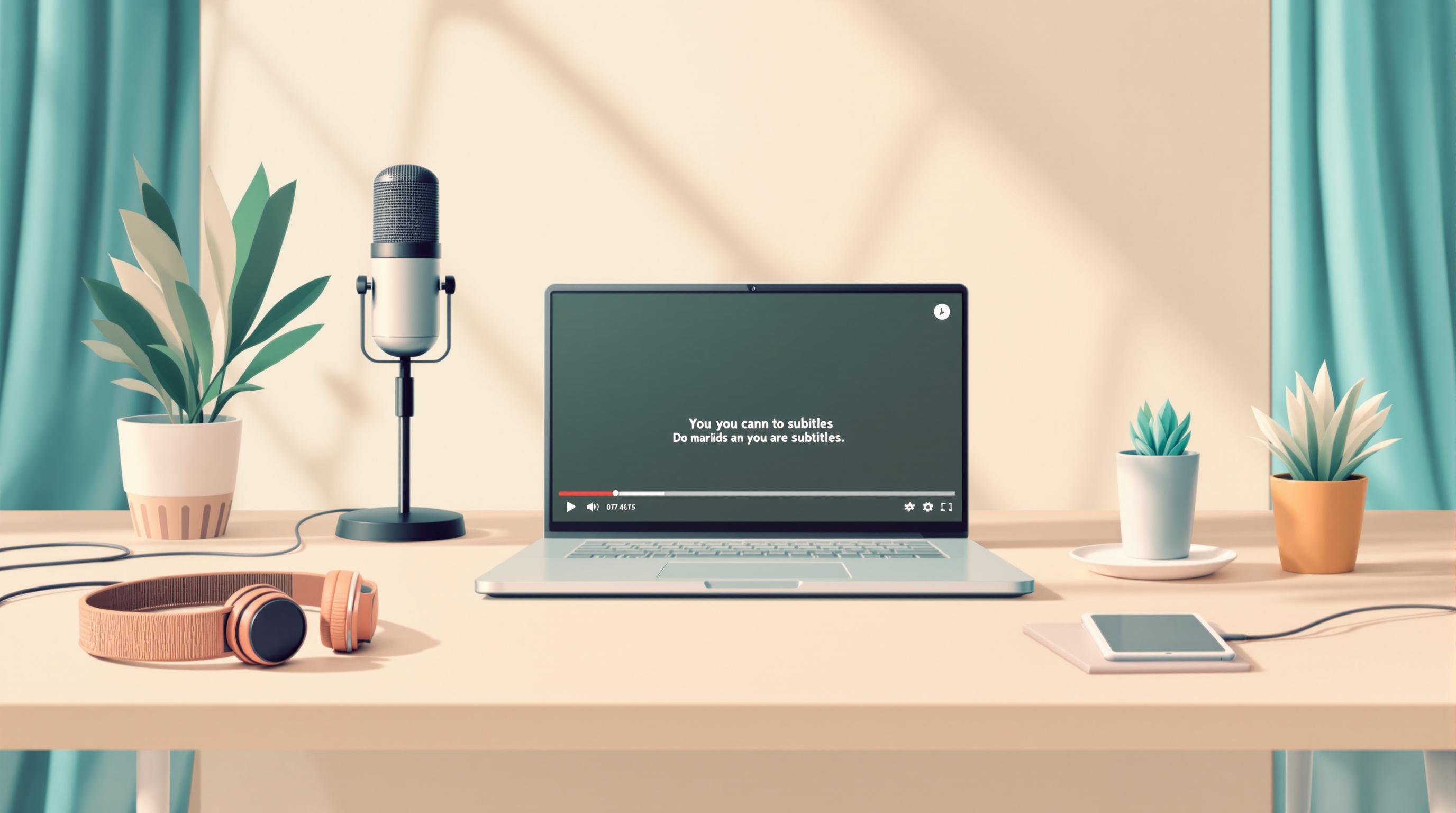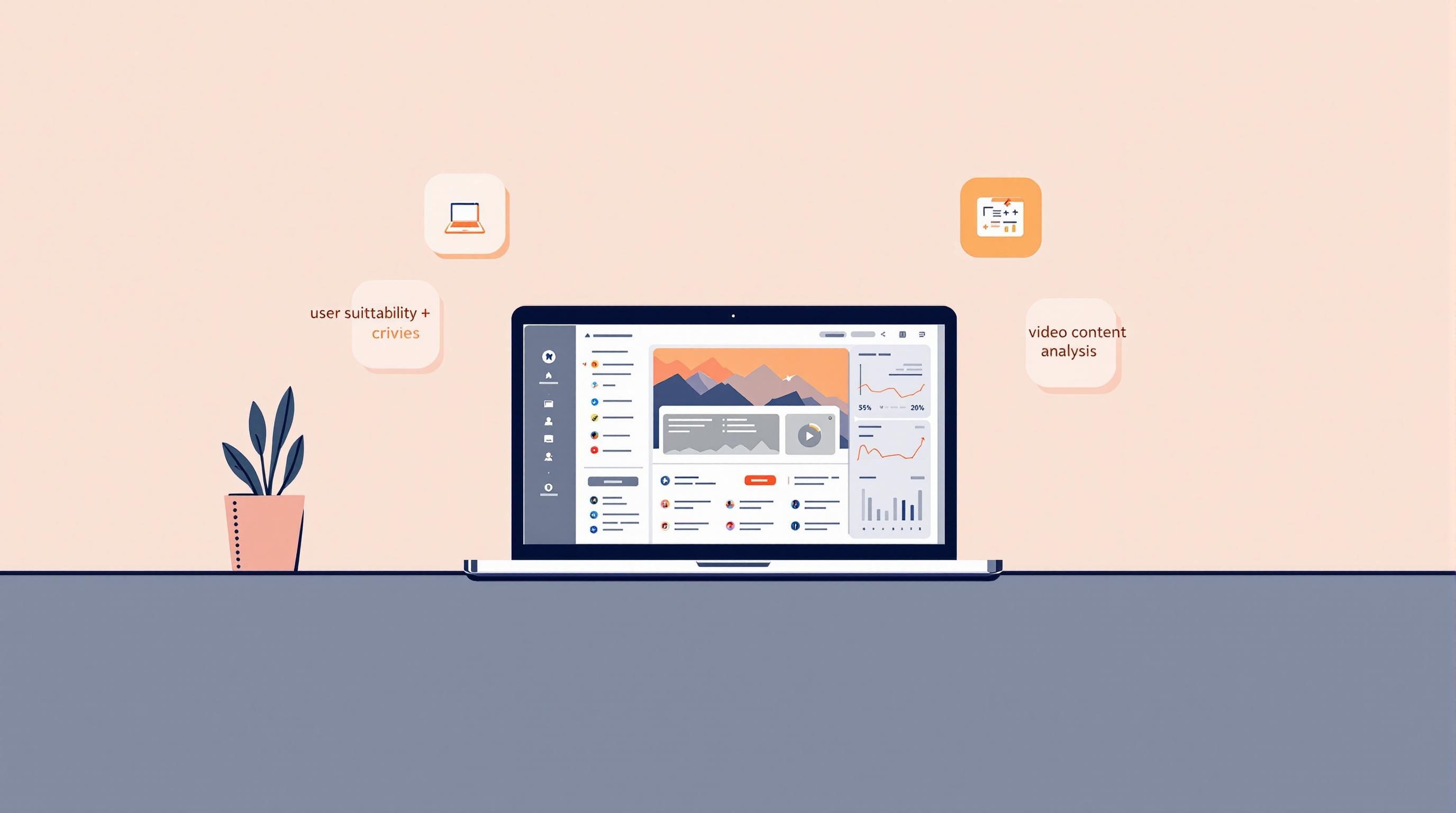AI simplifies how we understand YouTube videos by identifying and linking key elements - called entities - like people, places, or concepts. This process makes video summaries clearer, faster to navigate, and more informative. Here's how it works:
- Entity Recognition: AI uses transcripts and Natural Language Processing (NLP) to identify important entities like "World War II" or "Tesla."
- Entity Linking: AI resolves ambiguities (e.g., is "Apple" a fruit or a company?) using context, semantic reasoning, and knowledge graphs.
- Applications: Tools like Summarize.tech and FlowHunt connect related topics, making video summaries useful for education, research, and content creation.
Quick Overview of Challenges and Solutions
| Challenges | Solutions |
|---|---|
| Ambiguous terms | Context analysis and reasoning |
| Poor transcripts | Improved NLP and caption accuracy |
| Multilingual content | Advanced language processing |
| Dynamic updates | Real-time knowledge graph updates |
AI tools like those listed in the Video Summarizer Directory are shaping the future of video content. They save time, enhance understanding, and make complex topics easier to grasp.
Related video from YouTube
How AI Finds and Connects Entities in Video Summaries
How AI Recognizes Entities with NLP
AI simplifies video summarization by processing transcripts to pinpoint the most important details, saving viewers time. Using Natural Language Processing (NLP), it identifies key entities in video content. This process starts with transcription and moves on to techniques like named entity recognition (NER). By analyzing parts of speech and the context, AI can spot and categorize mentions of people, places, organizations, and other important concepts.
The real challenge comes after identification - resolving ambiguities and linking these entities meaningfully.
How AI Resolves Ambiguities and Links Entities
To address ambiguities, AI uses a mix of context analysis, semantic reasoning, and knowledge graphs. These methods ensure accurate identification and connections.
| Disambiguation Method | Purpose | Example Application |
|---|---|---|
| Context Analysis | Examines surrounding content for clarity | Differentiates "Apple" as a company vs. the fruit |
| Semantic Reasoning | Assesses relationships between entities | Links "Tesla" to the company when discussing EVs |
| Knowledge Graph Integration | Ties entities to trusted databases | Maps entities to verified sources like Wikipedia |
By combining these approaches, AI ensures precise linking, even in nuanced or complex scenarios.
Examples of AI Linking Entities in Summaries
Platforms like Summarize.tech and ScreenApp showcase how AI excels in linking entities within video summaries. For example, AI can recognize a professor discussing a scientific theory, connect their name to academic credentials, define technical terms, and link research papers to their sources.
High-quality captions are key to making these connections work effectively [2]. This capability not only improves understanding but also makes video content more accessible to a wide range of viewers.
These examples demonstrate how AI-driven tools are reshaping video summarization and the technology behind it.
Tools and Technologies for AI Video Summarization
Common AI Tools for Video Summarization
AI tools have made it easier to process video content by identifying and linking related elements. For instance, Summarize.tech is known for grouping and connecting topics within videos, offering a structured overview of the content [4]. Claude 3, with its large context window, excels at identifying entities and mapping their relationships in more complex video material [3]. Meanwhile, tools like Monica and Hyperwrite bring specialized features tailored for analyzing YouTube content.
These tools highlight various approaches to linking entities, and the Video Summarizer Directory serves as a hub for comparing their features and strengths.
Using the Video Summarizer Directory

The Video Summarizer Directory provides in-depth reviews of AI video summarization tools, focusing on their ability to link entities effectively. Here's a quick breakdown of its evaluation criteria:
| Feature Category | Evaluation Criteria | Key Focus |
|---|---|---|
| Tool Capabilities | Language Support, Transcription Features | Entity Recognition Accuracy |
| Pricing Models | Free Trial, Premium Features | Available Linking Features |
| Platform Support | Browser Extensions, Standalone Apps | Integration Options |
| Entity Linking | Accuracy, Knowledge Base Integration | Recognition Quality |
Frameworks for Entity Linking in Videos
Entity linking in video summarization is built on technical frameworks like OVEL (Online Video Entity Linking). These frameworks combine large language models with knowledge graphs to improve how entities are identified and connected. This integration helps create more accurate and meaningful relationships within video summaries, making the content easier to understand and navigate.
sbb-itb-26cab57
Applications of AI in Video Summarization
How Entity Linking Helps in Summaries
In education, AI tools like Notta simplify complex topics by linking related concepts in video lectures. For instance, when a video covers multiple scientific theories, these tools create a network of connected ideas, making it easier for students to follow along [4].
In research and content creation, entity linking becomes a handy tool for uncovering connections. Tools such as Summarize.tech group related topics automatically, offering structured overviews that help researchers and creators pinpoint relevant information faster [4].
| Sector | Application | Benefits |
|---|---|---|
| Education | Lecture Analysis | Connects concepts across topics |
| Research | Content Discovery | Highlights research connections |
| Content Creation | Topic Organization | Structures related themes |
| Accessibility | Information Processing | Breaks down complex content |
This approach not only improves understanding but also makes it easier to extract meaningful insights from video material.
Saving Time with AI Video Summaries
AI tools that link entities don’t just enhance comprehension - they also save time by turning lengthy videos into concise, structured summaries. For example, ScreenApp organizes video content into categories with short descriptions, letting users jump straight to the sections they care about [4].
Claude 3 takes transcript analysis to the next level, generating summaries and mapping out key ideas quickly [3]. Similarly, tools like Hyperwrite and ScreenApp condense video material into easy-to-digest formats while keeping the core message intact [4].
For YouTube content, FlowHunt extracts critical points and delivers detailed summaries, making it a valuable resource for learners looking to grasp key takeaways efficiently [1].
Challenges and Future of AI Entity Linking in Video Summaries
Current Problems in AI Entity Linking
AI struggles with some key obstacles when it comes to entity linking in video summaries. One major issue is entity ambiguity - terms that can mean different things depending on the context. For instance, "Apple" might refer to the tech company or the fruit. Another big hurdle is poor transcript accuracy. Misinterpreting words, such as reading "NASA" as "nasa", can lead to incorrect entity recognition.
| Challenge | Impact | Example |
|---|---|---|
| Entity Ambiguity | Incorrect context mapping | Paris linked to Texas instead of France |
| Transcript Quality | Failed entity recognition | Misinterpreted acronyms and proper nouns |
| Multilingual Content | Limited language processing | Inconsistent linking across languages |
| Dynamic Content | Outdated entity references | New products or changing names |
Handling multilingual content is another challenge. AI systems must accurately interpret context across different languages and regional nuances, which is no small feat. On top of that, dynamic content - like newly launched products or name changes - requires AI to keep up in real time.
Despite these hurdles, ongoing advancements in AI technology are helping to tackle these problems.
Future Developments in AI Video Summarization
The future of AI in video summarization looks promising. New technologies are stepping up to address current limitations. Multimodal linking, which combines visual, audio, and text data, is improving AI's ability to understand complex relationships. At the same time, advanced NLP techniques are helping systems better handle multilingual content and ambiguous references.
With these advancements, AI tools are becoming better equipped to:
- Understand and process context across multiple languages
- Adjust quickly to changes in dynamic content, like name updates or new products
- Resolve ambiguous terms with improved accuracy
Real-time updates and adaptive machine learning models are essential for managing ever-changing content. Tools tracked by platforms like the Video Summarizer Directory showcase how these cutting-edge capabilities are being integrated into AI systems.
These developments are setting the stage for AI tools to create more precise and meaningful video summaries, especially for platforms like YouTube.
Conclusion: AI and Entity Linking in Video Summaries
How AI Makes YouTube Videos Easier to Understand
AI is reshaping how we process YouTube videos by linking entities to create clear, structured summaries. This approach simplifies complex content, letting viewers quickly grasp the main points without watching the entire video. Tools like Summarize.tech break videos into sections while maintaining topic connections, and Notta links related ideas in video lectures for better comprehension. By tackling challenges such as unclear entities and inaccurate transcripts, these tools deliver more precise and useful summaries.
This process not only saves time but also makes video content easier to understand for a wide range of users. It's especially helpful in areas like education, research, and professional growth, where quick and structured access to information is crucial.
Where to Find AI Video Summarization Tools
To get the most out of these tools, finding the right one is key. The Video Summarizer Directory helps users compare options based on features like entity recognition, pricing, and compatibility, making it easier to match tools with specific needs.
For added convenience, browser extensions like Monica AI integrate directly into YouTube, while other specialized tools offer tailored summaries for unique workflows. Whether you're focused on learning, research, or creating content, these solutions make it simple to incorporate AI-powered video summarization into your routine.
FAQs
What is an example of entity linking?
Entity linking in video summaries uses AI to identify and connect key elements within the content. For example, it might recognize Seattle as a location and link it to geographic data, or associate tech industry with related mentions throughout the video. This makes it easier for viewers to understand how concepts are related without needing to stop and search for extra details.
AI models analyze context to build these connections. Take a historical documentary, for instance: the AI could link references to Winston Churchill with his role in World War II, his speeches, and other related events. This creates a network of information that enhances the viewer's understanding of the topic.
Here are some common examples of entity linking:
| Entity Type | Example | Connection |
|---|---|---|
| People | Elon Musk | Links to Tesla |
| Organizations | Links to company profile | |
| Locations | Seattle | Links to geographic data |
| Concepts | Quantum computing | Links to definitions |
Many tools, like those in the Video Summarizer Directory, showcase these capabilities. For instance, Summarize.tech offers features like smart categorization, helping users explore related concepts while watching videos, making even complex topics easier to follow.


